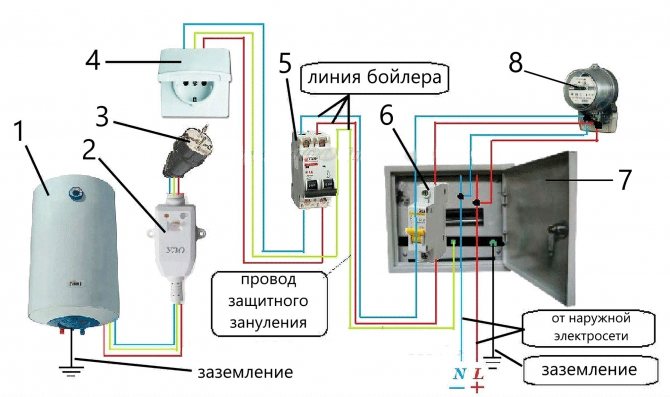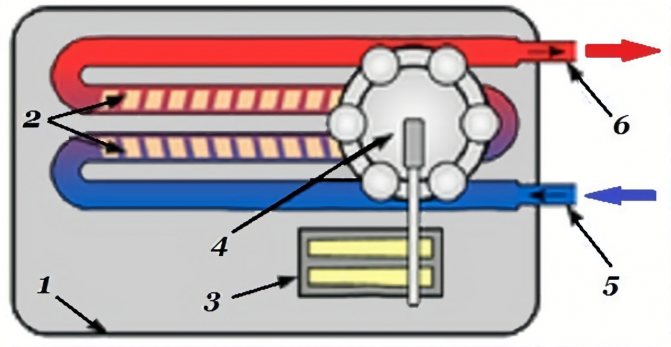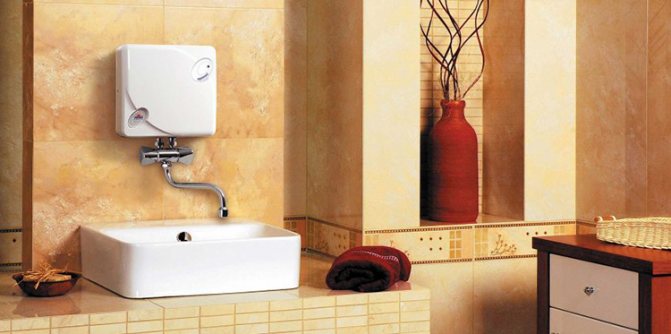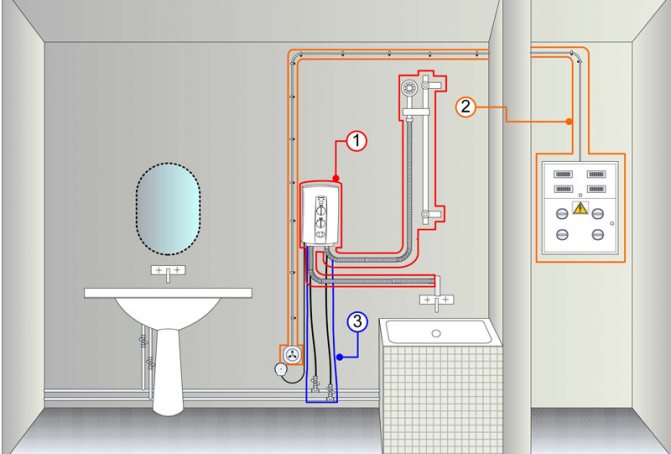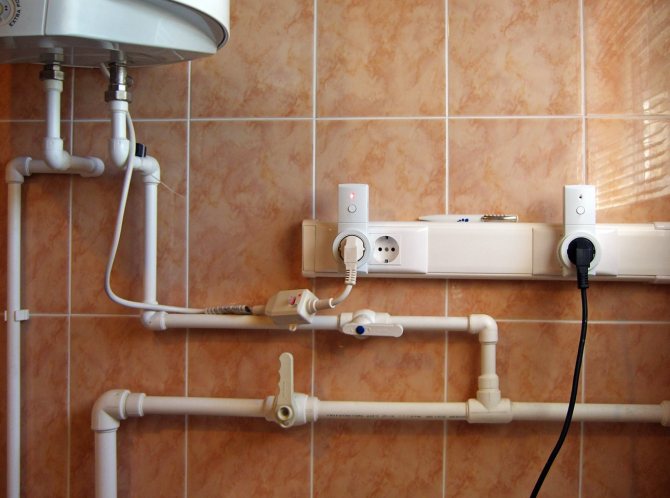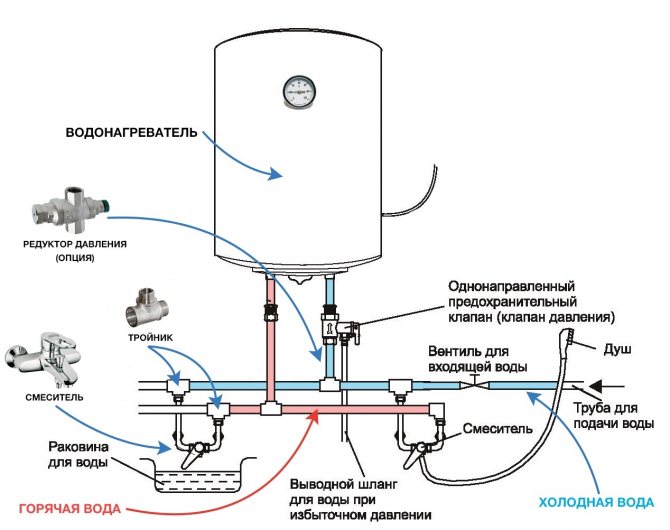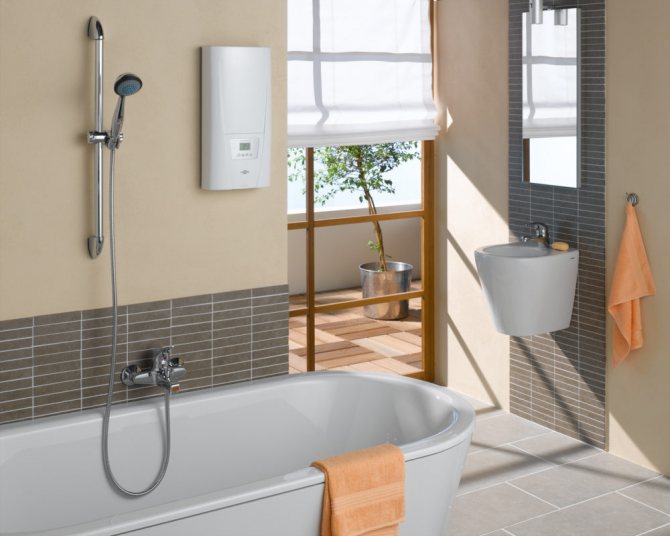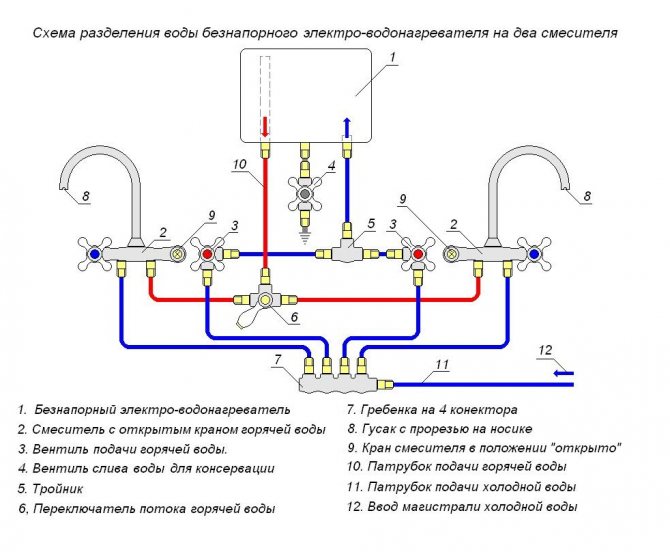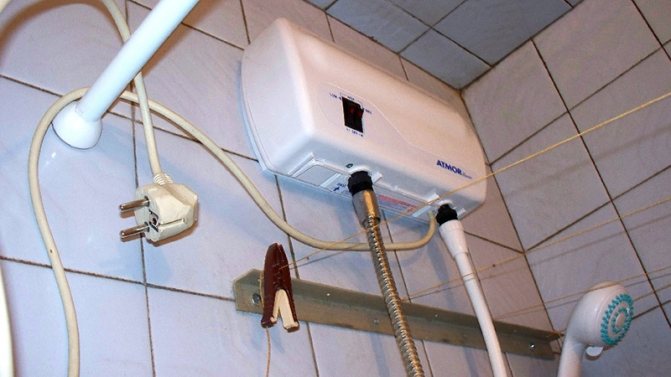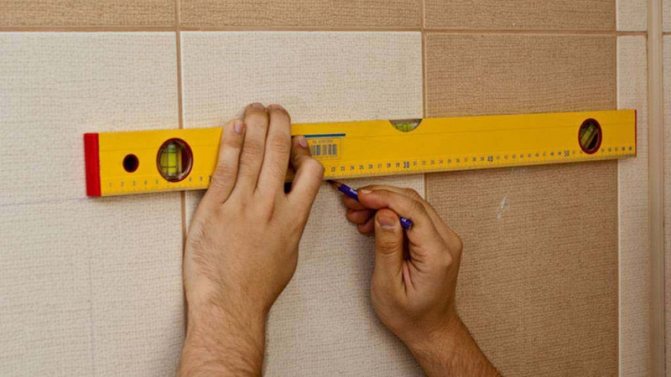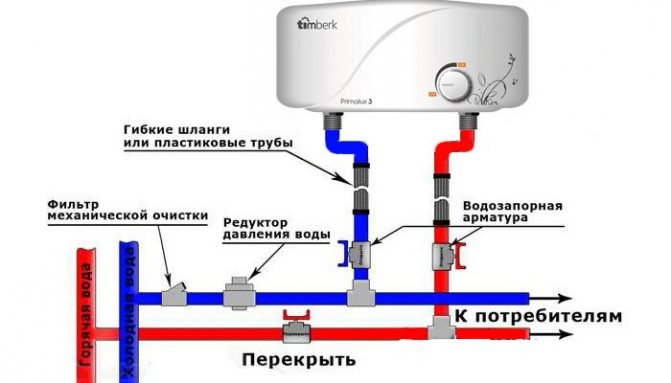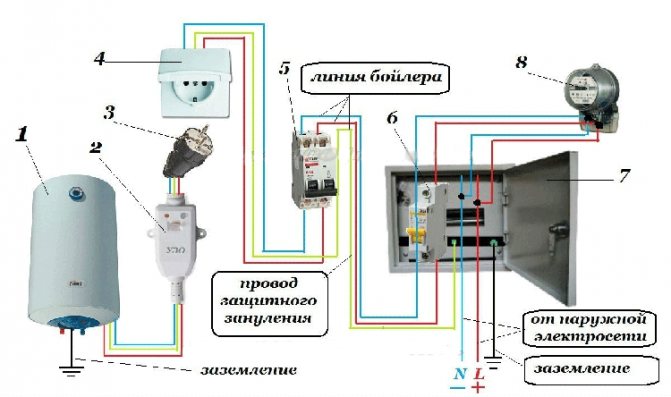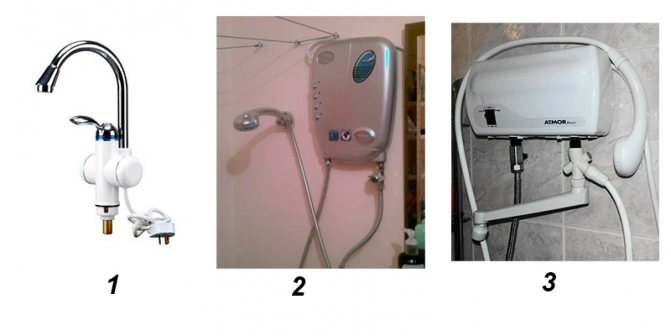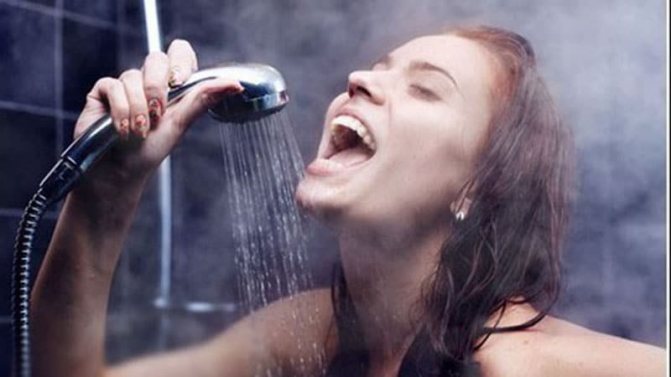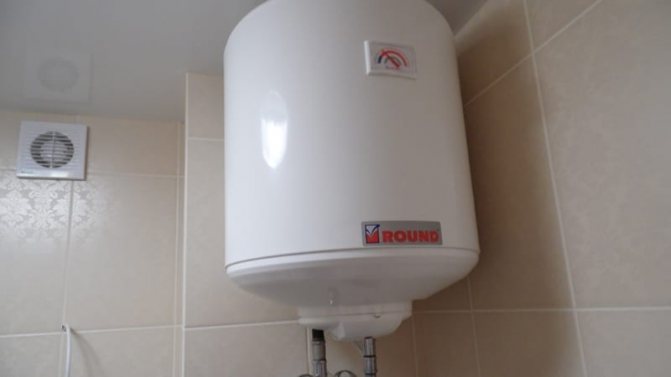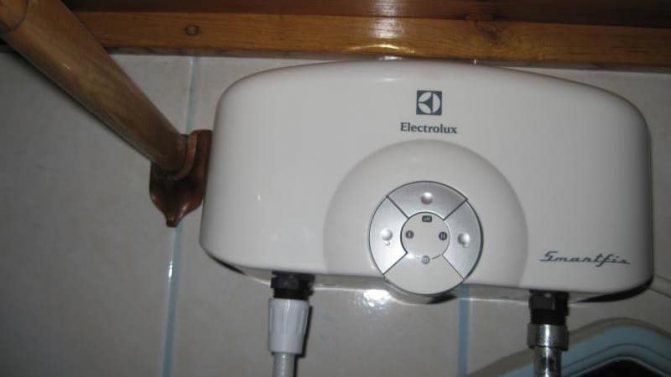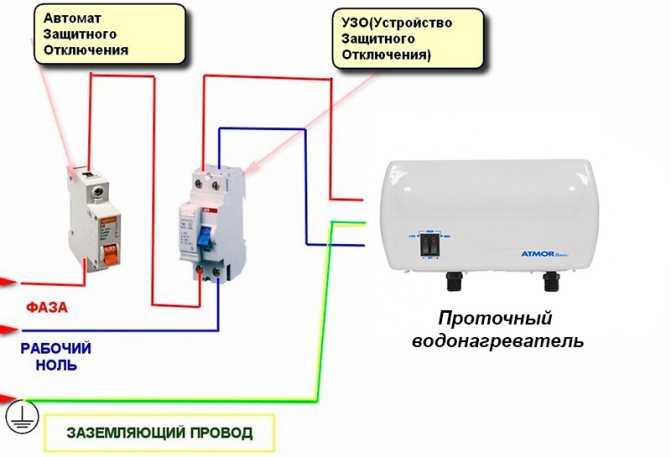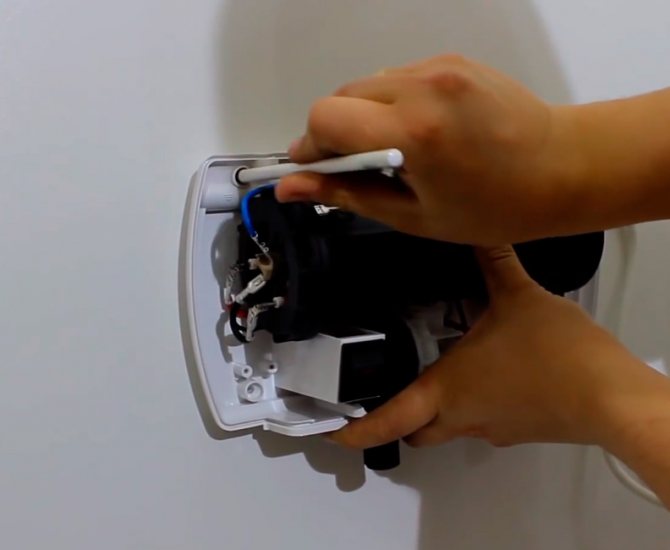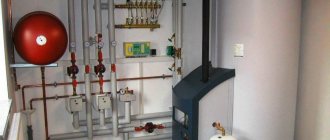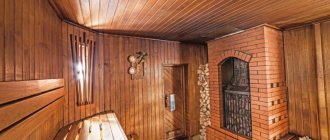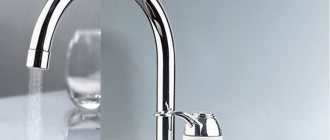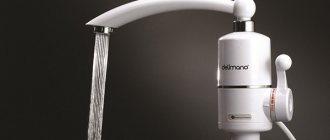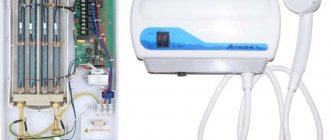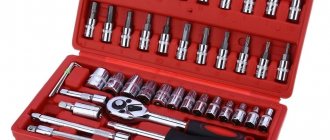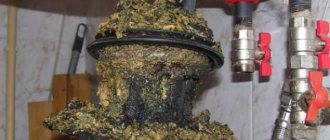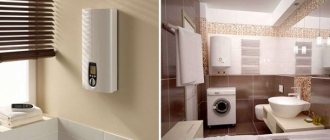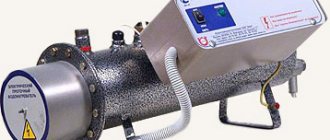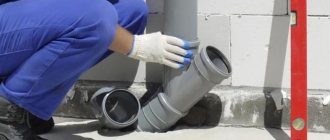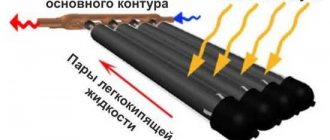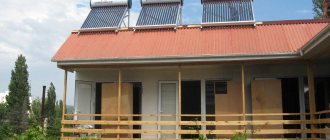Earlier, we conducted a review in which we thoroughly covered SѓSЃS‚ройство РїСЂРѕС‚РѕС ‡ РЅРѕРіРѕ РІРѕРґРѕРЅР ° гревР° теля, as well as recommendations for selection.
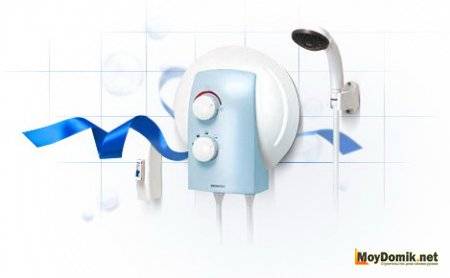
Installation and connection of an instantaneous water heater to the water supply and power supply
So, the new "protochnik" is spared from the packaging, the instructions have been read and now is the time to think about where it is better to install the instantaneous water heater.
It is advisable to choose a place for installing an instantaneous water heater based on the following considerations:
- whether splashes from the shower will fall on the device in this place;
- how convenient it will be to turn on / off the device;
- how convenient it will be to use the shower (or tap) of the device.
Before proceeding with the installation, you need to decide:
- whether it will be convenient to use the device directly at the place of taking a shower (or, say, washing dishes);
- whether it will be convenient to use different operating modes (if there are such adjustments);
- whether moisture or water will get on the device (after all, there are clean 220V!).
- It is also necessary to take into account the future water supply - how convenient it will be to connect the instantaneous water heater to the water supply. There will be no special conditions for the wall - the weight of the device is small. Naturally, it will be somewhat more difficult to mount the device on curved and very uneven walls.
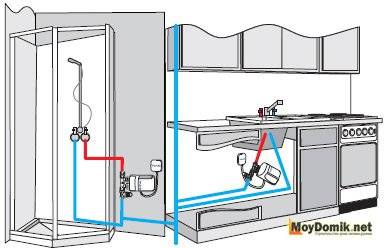

Diy instantaneous water heater installation
Installation begins with determining the location. We take a level, a pencil and mark the place of the future installation. We remove the top cover from the water heater and apply it to the wall, draw the horizontal with the level and mark the future holes. Using a drill, we drill holes for dowels (or plugs - as you like). We install the dowels and fasten the device to the wall with screws.
Usually, the kit contains the necessary fasteners, but it often happens that the dowels themselves are short (for example, there is a thick layer of plaster on the wall) and the screws themselves are short, so I would recommend purchasing the necessary fasteners of the required dimension in advance. At this, the installation can be considered complete.
Installation and connection of an instantaneous water heater to the water supply and power supply
Installation of a water heater in the bathroom
To install and cut into the common pipeline of heating equipment, you will need the following tools:
- hammer drill or hammer drill;
- concrete drill / drill-drill;
- building level;
- wrench;
- pliers;
- soldering machine;
- fasteners;
- screwdriver.
Each water heater has an individual mounting principle specified by the manufacturer. But most often a metal bracket is nailed to the wall, on which the boiler is hung or a bar is screwed onto the tank itself, followed by fixing with bolts.
The power (diameter) of the fasteners increases with the displacement of the tank. Responsible manufacturers with equipment always complete a set of necessary fasteners that can withstand the load of a given tank. When purchasing consumables on your own, remember that 6 mm dowels-nails are suitable for hanging a small tank of 30 liters.
Make a marking of the position of the boiler and its attachment points. Drill dowel holes at the marked points.
Note: ceramic tiles can be drilled with a drill in concrete by resetting the mode to a conventional drill. A gentle and gentle pressure when drilling will help prevent tiles from splitting.
Insert the dowels and fix the bracket or other parts specified by the manufacturer under this boiler.Place the water heater in the desired position.
Connecting an instantaneous water heater to the water supply
An electric instantaneous water heater can be connected to water in several ways.
Method one is simple
We take the shower hose, unscrew the "watering can" and connect the hose to the cold water inlet to the water heater. Now, having set the mixer handle to the "shower" position, we can use the water heater. If we put the handle in the "tap" position, then cold water comes out of the tap, bypassing the heater. As soon as the centralized hot water supply is restored, we turn off the water heater from the “shower”, screw the “watering can” back on the shower and then enjoy the benefits of civilization.
The second method is more complicated, but more correct.
Connecting the water heater to the water supply of the apartment through the outlet for the washing machine. For this we use a threesome and a skein of fumlenta or thread. After the tee, a tap is needed to disconnect the water heater from the water and to adjust the pressure and temperature of the water from the water heater.
When installing the crane, you should also pay attention to the ease of use of the latter. After all, we will repeatedly open and close it in the future.
The section of our water supply system from the tap to the water heater can be mounted using various pipes: from metal-plastic and PVC to ordinary flexible pipes. The fastest way, of course, is to make the liner using flexible hoses. If necessary, our plumbing can be fixed to the wall (or other surfaces) using brackets or any other means of fastening.
Installation and connection of an instantaneous water heater to the water supply and power supply
Advantages of flow models
Before starting work, you need to study all the documentation that comes with the boiler. There are a few tricks that can help you set it up to last longer than the warranty period.
Modern appliances are powerful. Not every wiring will be able to withstand such energy consumers. Therefore, before buying, you need to evaluate how reliable the electrical wiring in the apartment is.
It is most convenient to hang a water heater in the bathroom above the sink. If a shower hose is provided, then hang over the bathroom. Small devices can be hidden in the cabinet under the sink.
Some devices are splash-proof. If there is no protection, it must be installed in the driest place. In the case of a separate bathroom, installing a heater in the toilet is not the best solution, since there are pressure and temperature adjustment buttons on it.
The choice of the location of the water heater is determined by convenience and safety.
Hinges and brackets for hanging the device are sold with the device. It remains only to make holes. It is important to hang the appliance horizontally. Otherwise, air jams will appear in it, which threatens the failure of parts.
It is necessary to turn off the electricity in the apartment and pull the cable through the hole in the back wall of the water heater. Next, the boiler is hung on the dowel-nails and checked with a level. Now you need to connect the wires inside, in accordance with the color coding. They are stripped and inserted into the terminal box. They can be fixed by tightening the terminal screws. The unit can only be connected if there is an earthing device and an automatic shutdown device. It is placed in the distribution box.
There are two options for pipe connections: above the wall level and below the sink level. Water heaters have an inlet for cold water and an outlet that must be connected to a mixer. Inexpensive models have a shower at the outlet. During installation, do not forget to cover all joints and hoses with gaskets with fum tape to avoid leaks.
The main advantage of water heaters is their compact size.They don't have a storage tank, so they can be placed under a sink or in a small closet.
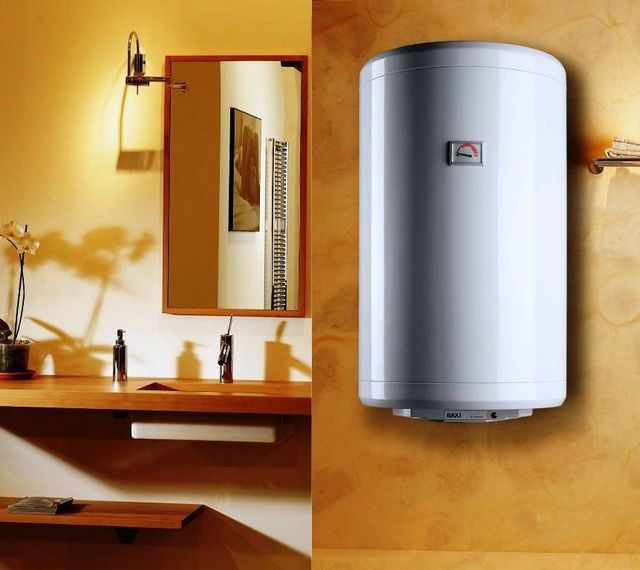

The device allows you to receive hot water continuously. In the case of accumulative models, you will have to wait several minutes or hours until the next batch heats up.
The device costs less than storage counterparts. It is easier to maintain and repair.
Connecting an instantaneous water heater to the mains
As a rule, household single-phase flow-through water heaters are very powerful devices - from 3 to 9 kW. Accordingly, for the correct connection, a dedicated line is required (necessarily with a separate RCD for emergency shutdown), since the usual one will not withstand such a voltage.
It is forbidden to use standard sockets for power supply, due to the fact that in most cases they do not have proper grounding.
When connecting wires to screw terminals, the phasing must be observed:
- L, A or P1 - phase;
- N, B or P2 - zero.
It is not recommended to carry out electrical work on your own; it is better to use the services of a specialist.
Tags:
Water heater
moydomik.net
The device of water heaters and their varieties
First, you should select the type of heating device that is most suitable for your case. To do this, it is worth analyzing and determining what requirements the product must meet, as well as its parameters and functions.
An uninterrupted hot water supply is very important for modern life.
Water heating devices can differ in the type of power supply and in the functional device. The power source in water heaters can be natural gas or electricity. By the type of action, the units are under running water and with a storage tank.
Water in storage systems is heated in a tank connected to the water supply. This type of heating device is especially popular. This can be argued by the affordable cost of devices, as well as the lack of special conditions for the device of electrical equipment.
Having installed the storage system, you will have to wait until the water heats up to the desired temperature
The functional device of instantaneous water heaters is that the water is heated by passing through a special sleeve equipped with an electric thermoelement. Products of this type are mounted directly on the mixer, which is connected to the water supply.
This system provides heating of water within 30 degrees. A significant disadvantage of such devices is that electrical devices have high energy consumption. This is disadvantageous in terms of economy. In addition, not all houses have electrical wiring that allows such powerful water heaters to be operated.
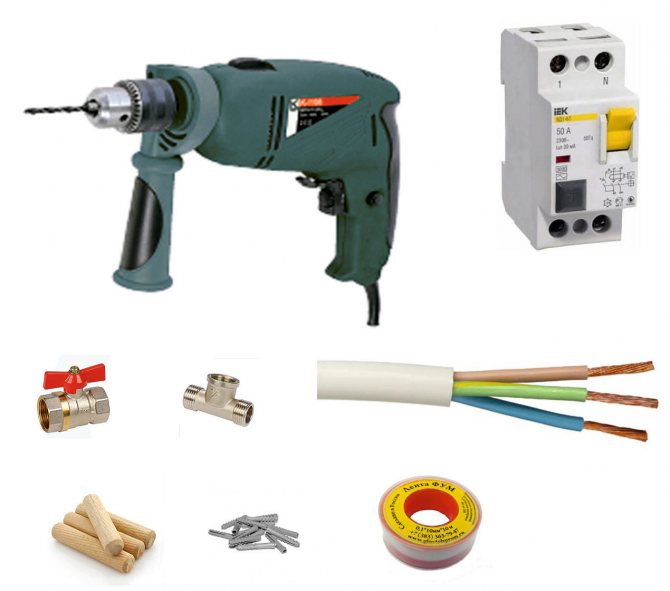

Instantaneous water heaters are powerful electrical appliances that allow you to get hot water when you need it
According to the class of energy consumption, flow-through heating systems are divided into two types - single-phase and two-phase. Another difference is what type of heating element is used in the appliance. It can be a heating coil or a thermoelectric heater. In the event that tap water has a high salt content, the best choice would be to install an instantaneous water heater equipped with a spiral.
For most of these devices, the design provides for placement on the wall in close proximity to the mixer in the kitchen area or in a combined bathroom in order to reduce heat loss. Flow-through heating devices have a low mass, and therefore they do not require capital fasteners, as in the case when a boiler is installed in a bathroom.
Heaters operating on this principle have the following drawbacks:
- high energy intensity - from 5 to 30 kilowatts;
- for the correct operation of the equipment, a certain level of pressure in the water supply system is required; this excludes the possibility of using instantaneous water heaters on the last floors of apartment buildings.
Flow-through devices are optimal for installation in small rooms with a small number of residents. In this case, the apartment should be located on the lower floors.
Required tools and materials
The instantaneous water heater must be connected using suitable tools and materials. The whole process is divided into three major stages:
- the connected element is mounted on a selected place on the wall of the dwelling;
- it connects to electricity;
- further connected to the cold water supply system.
Circuits of instantaneous water heaters of different types have almost the same parameters, therefore, tools and materials are required for installation of any type:
- for the installation of the structure, a drill is required, equipped with suitable drills, and their choice depends on what material the wall of the room is made of, where it is planned to carry out the installation work, since standard concrete drills will not be suitable for tiling;
- for fastening the device, dowels with self-tapping screws are required;
- to connect to electricity, a copper wire with three cores is required, equipped with high-quality double insulation, and the cross-section must be at least 2.5 sq mm;
- hammer, screwdrivers, gas wrench, pliers, open-end wrench;
- FUM tape is used to seal various joints;
- to connect an instantaneous water heater to a cold water supply system, a pipe is required, and metal-plastic products are considered the best choice.
When choosing the location of the structure, it is taken into account that it should be at the level of the head of adults in order to prevent overheating of the equipment or its filling with water.
How to install a gas water heater
A boiler that runs on gas is more economical than electrical appliances. But its disadvantage is the complex connection and the need to obtain permission.
We suggest that you familiarize yourself with How long does the machine wash
A gas water heater is a device for heating water using the energy of gas combustion.
To install a gas water heater at home, you need to draw up a project and get approval for it.
The main rules for gas wiring:
- ceiling height - not less than 2 m;
- room volume - not less than 7.5 m³;
- chimney diameter - 110-130 mm.
Installation must be carried out by specialists, otherwise the device will be removed from service and warranty.
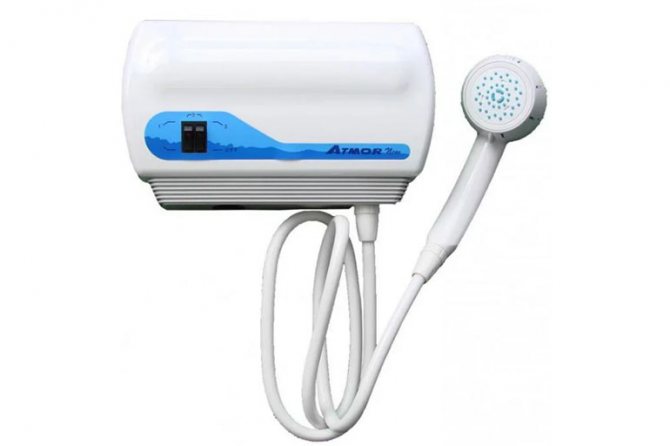

Replacing the device with a new one is much easier because you do not need to connect it to the system.
Stages:
- Shut off the gas.
- Remove the flexible hose, and if the connection is outdated, through a metal pipe, then it must be sawed off.
- Shut off the water.
- Pull the pipe out of the chimney.
- Remove the device from the wall.
A gas water heater has become indispensable in rooms where there is no hot water supply.
It is important not to damage the pipes, otherwise they will have to be replaced.
Before starting the installation, you need to check the chimney and the tightness of all pipes. If they are worn out, it is better to buy new ones, as this threatens with a gas leak. The chimney opening must be at the highest point of the roof and must be covered with a canopy.
After preparatory work, you need to remove the front panel on the heater. To do this, pull out the power regulator and unscrew the fasteners. Hang the body on the dowel-nails. It needs to grip firmly on its brackets and not rest on water and gas pipes.
Connect the flexible hose to the cold water inlet. At the outlet, connect the hose to the hot mixer.
The last stage is the installation of the chimney corrugation.One end is connected to the device, and the other is inserted into the ventilation. Then you can assemble the front panel of the heater.
Stages of connecting an instantaneous water heater
After the preparatory work, you can proceed to the direct installation. It is divided into several large stages, and each of them is significant and important, since the ideal work result depends on the competent performance of all tasks.
Seat selection
Initially, it is important to determine the location of the equipment. It is necessary to install an instantaneous water heater correctly, therefore, when choosing an installation site, the recommendations of specialists are taken into account:
- it is important that it is convenient to use the structure for direct users, since usually there are different buttons on the external panel for controlling the boiler;
- it is not allowed that moisture gets on the device during operation, as this can cause a short circuit, as well as damage to expensive equipment;
- when choosing a place, the convenience of connecting electrical wiring and cold water pipes to the water heater is taken into account;
- installation on any wall is allowed, since flow-through products are not large, so the wall will not be significantly affected.
As soon as the optimal location for installing an instantaneous water heater with your own hands is chosen, markings are applied to it. To do this, you need to use a level and a pencil.
A lot of attention is paid to marking, since it is not allowed that the water heater is installed with any distortions or irregularities, since this will negatively affect the efficiency of its use, as well as its service life. On the cover of the product, the locations of the holes for fastening are marked on the wall. After that, using dowels and self-tapping screws, the structure is attached to the wall of the room when orienting to the previously applied markings.
Most often, instantaneous water heaters are produced complete with all the necessary elements for fastening, but often you have to deal with the fact that the dowels are too short, so it is impossible to attach the equipment to walls on which there is a significant layer of plaster. Therefore, you will have to additionally buy suitable fasteners.
Water connection
Next, you need to figure out how to connect an instantaneous water heater in an apartment to a cold water supply system. For this, one of the possible methods is selected. The simple method is usually used by beginners. It assumes that it is initially unscrewed from the shower hose of the watering can, after which it is attached to the water inlet of the equipment. The mixer is then set to the shower position, after which you can use the heater for its intended purpose. If the handle closes to the tap position, cold water will flow from the tap. This method is usually used to temporarily solve a problem associated with a lack of hot water in an apartment, for example, when a breakdown occurs in a centralized system. For the main method of obtaining hot water, it is considered unsuitable.
The second rather complex method involves the installation of boilers, which are used as the main elements for obtaining hot water. For this, a tap is used to connect the washing machine. A tee is purchased, and a fum tape is prepared. After attaching the tee to the outlet, a tap is installed that allows you to regulate the flow of cold water to the water heater, and this will also facilitate the control of the set temperature in the equipment. When choosing the location of the crane, it is taken into account that it must be in an accessible and convenient place, and it is also not allowed to be blocked by any boxes or other elements.A pipeline is laid to this tap from the water heater, and most often metal-plastic pipes are used for this. It is allowed to use plastic pipes or use flexible pipes.
For the aesthetic appearance of the entire room, it is advisable to lay pipes in such a way that they are not visible, and if this is not possible, then they are closed with boxes.
Thus, having figured out how to connect instantaneous water heaters to the water supply system, each owner of residential real estate can easily cope with this process on their own. If pipes are used for connection, then all threaded connections must remain freely accessible, therefore they cannot be walled up in walls or closed with any hermetic and integral structures.
Electrical connection
How to install a flow heater? To do this, it is necessary not only to connect it to cold water supply, but also to electricity. Most modern equipment is powerful. Their power can vary from 3 to 9 kW. Therefore, for their competent installation, it is advisable to allocate a separate electrical line equipped with an RCD automatic device, so that in the event of any unforeseen power outage, the device is automatically disconnected from electricity. It is not allowed to use ordinary sockets for such a powerful electrical device, since most often the grounding in them is of poor quality.
Since a separate electrical line is allocated for the equipment, it is advisable to carry out all work in the process of overhauling a house or apartment. To do this, all wires are hidden in grooves made in the walls of the premises. It is advisable to lay all cables in special boxes that provide protection against fire. A high-quality socket with a good grounding is certainly chosen.
When connecting the wires to the terminals, the correct phase must be taken into account. Connecting a durable water heater to electricity is certainly carried out until the moment the water comes in. The very process of working with electrical wiring is considered quite complicated, so if the owner of the premises does not have work experience, then it is advisable to entrust the procedure to specialists. The wiring diagram is simple for qualified electricians only.
For proper installation, it is recommended to follow the advice of specialists:
- during operation, only those nozzles are used that are sold in the kit to the equipment;
- the device should be connected directly to the electrical panel of the house, since if this process is carried out to a regular outlet, then various problems in the power supply of the house are possible;
- for work, it is recommended to choose a copper cable that provides a high quality installation;
- an RCD is necessarily mounted as a safety device, since you have to work with a powerful and complex device;
- it is advisable to initially choose a place of installation that will be optimal not only for using the device for its intended purpose, but also for connecting it to different systems, so that no difficulties arise during operation;
- it is impossible for a stove or refrigerator, as well as other electrical equipment, to be located under the heater, since if a leak occurs during operation, the devices may break down, and the wiring in the apartment may also be disturbed.
Thus, if you follow the basic recommendations of specialists, then a quick and high-quality installation is ensured. If you follow the instructions exactly, there will be no problems, and no complications will arise during the operation of the device.
Installation steps
After the place for the water heater has been determined, the moment of direct installation comes.
Mounting the device
- Start by marking the wall... The process must be carried out to the nearest centimeter. Establish the distance between the mountings and the nearest walls and ceiling. Use a tape measure to mark the wall.
- Make holes in the marked areas, using a hammer drill or electric drill.
- Screw the pre-prepared anchors into the holes... A water heater is attached to them.
- Make sure that the boiler is level: in line with the ceiling and floor. This is done through the building level.
Water connection
- It is necessary to implement outlet from the hot / cold piping system... For such a connection, conductors are installed in the pipes. In some cases, to avoid cutting the pipes, tees are fixed at the connection point of the mixers.
- On every pipe that goes to the boiler cranes are fixed... If possible, they are installed as close as possible to the place where the branch takes place. Often, taps are attached directly to the tee.
- Next, a valve is installed on the cold pipeline... The valve controls the process of water ingress into the water supply system from the boiler. The valve must be fixed on the "cold pipe"; in the safety valve itself there is another tap that opens to drain water from the heater.
Arrangement of consumption point
It is recommended to install separate copper cable, which will be directed from the boiler to the meter:
- it is necessary to locate the "phase ground" (red wire) and "zero" (blue wire);
- a shield is mounted on the side of the unit, the machine snaps into place and a cable is passed directly through it;
- the cable itself must be stripped of insulation by 10 cm and connected to the terminals of the machine;
- the phase of the electrical panel is screwed on from the top, and the phase of the device is from the bottom.
In cases where this is not possible, the water heater is connected to a regular outlet. Here connection of other additional equipment is excluded.
For security a double automatic machine is installed next to the boiler, the power of which will be similar.
Power connection
The source of the converted energy means alternative, environmentally friendly "home" power plants (wind turbines, solar panels, boilers, etc.).
The connection diagram to alternative sources is rather complicated. One way is this connection with motor shaft, which is connected to the generator by means of rotors or by means of a hydraulic switch to a gas boiler.
Recommended anyway contact a specialist, draw up and approve a project... Otherwise, it is regarded as a violation of legal norms.
To the gas boiler
Indirect heating device - This is a thermally insulated container containing water for various needs... The water in the indirect boiler is supplied in the direction of two circuits:
- heating (connected with the heating system of the house);
- for heating water (coming from the water supply system).
Before installing the indirect water heater you need to know three principles:
- Cold water is supplied through the lower part of the device, hot water comes out through the upper part.
- Water, or a pipe, runs inside the boiler from top to bottom.
- There is a recirculation point in the center of the device.
When installing an indirect boiler, one of the following three mounting options is used:
- connection method with a three-way valve;
- with two circular pumps;
- with hydraulic arrow.
With three-way valve
If the residents of the house use a lot of waterthen it is advisable to choose the connection method with a three-way valve. For this purpose, two circuits are produced:
- main (for heating the room);
- separate (for heating water).
As a space between the above contours a three-way valve is used... Normal operation of the system is only possible with a correctly set thermostat.
With recirculating pumps
An alternative to the three-way valve can be a two-circulating pump method, where the presence of a check valve is provided... This type of installation also requires two circuits. A pump is used to control each of them.
A feature of the installation is that the circular pump is fixed in front of the heating... The temperature sensor of the water heater is used to control the performance of the pumps.
With hydraulic arrow
While each circuit is provided with a circular pump, a hydraulic distributor (usually consisting of a hydraulic switch and a manifold) is used to balance the different flows.
It is also possible to adjust the pressure differences observed in different circuits with balancing valves.
The installation diagram of an indirect boiler in an apartment is quite complicated and its it is better to entrust it to a specialist.
To electricity
The whole process consists of two stages:
- Connecting the unit to the panel via a cable or removing the outlet for the water heater.
- Establishing connection between the boiler and the water supply system. In other words, the strapping of the device.
From this video you can find out in detail how to install a device for heating water with your own hands:
Frequent mistakes
It is actually very easy to connect an instantaneous water heater to different communication systems, however, if you do not understand this issue in advance, and also do not have experience, then there is a high probability of making several serious mistakes. They negatively affect the performance and service life of all equipment.
The most common mistakes are:
- such powerful equipment is connected to the existing electrical system without a separate line, which leads to a reboot of the system, since it cannot cope with such a load, therefore, it often knocks out plugs, and there is also instability in the operation of various electrical devices;
- the device is turned on before it is connected to the water supply system, which may lead to disruption of its operation;
- unsuitable pipes or other elements are used to connect it to the water supply;
- pipes are laid in a convenient way, but it is not taken into account that they significantly spoil the appearance of any room, therefore, after installing the heater, the interior of the room may deteriorate;
- the power of the device is incorrectly calculated, therefore cold or hot water flows from the tap, which leads to a lack of comfort in its constant use for its intended purpose;
- electrical wires were connected incorrectly, therefore, short circuits or other problems in the performance of the equipment occur;
- the location of the water heater is illiterate, therefore, difficulties and inconveniences appear in the process of using it, due to the lack of the ability to freely regulate its functions.
Thus, each person who independently installed an instantaneous water heater on their own faced certain difficulties, therefore, in order to prevent possible mistakes, it is recommended to carefully study the correct instructions beforehand. As a result, a competent installation of the device is ensured, which guarantees a constant flow of warm water into residential real estate. This significantly increases the comfort of living in any apartment or house in which there is no connection to the central hot water supply. Often, an instantaneous water heater is installed as an auxiliary source of hot water in case there are problems in the central system.
vannayasovety.ru
Temporary connection
The above method is suitable for permanent use.However, when the water in the apartment is turned off once a year for 10 days, this option is not justified. Therefore, you can use another method, how to install an instantaneous water heater in the bath, and make it removable.
The advantages of this approach are obvious - when the device is not needed, it is simply removed and does not take up extra space. Moreover, all devices are equipped with a tap and shower.
Installation instructions:
- first you need to decide on the installation site. The most suitable option is to attach it directly above the bathroom. Thus, it will turn out to wash and collect hot water;
- the wiring of communications can be done under the bathroom and closed with a false panel. For the device to work, you will need to remove the electrical outlet and provide a connection to the water supply;
- the outlet must be connected through the machine - its power must correspond to the power of the heater. Connection to cold water is done using a flexible hose. To do this, a tee with a thread and a tap is cut into the main pipe;
- only fasteners are made on the wall.
Thus, when hot water is turned off in the apartment, the device is hung on the wall, connected to the cold water supply and connected to the electrical network. Both a standard tap and a shower hose can be screwed into the outlet.
Installed instantaneous water heater quickly, and it is easy to use. The main thing is to provide for its installation during the repair and wiring of the main communications in the bathroom.
About signs of living comfort
The presence of hot water in the house is one of the main signs of a comfortable home.
In apartment buildings, hot water supply is often centralized. Water is heated separately in the boiler room and supplied to all apartments.
However, now such a water supply is economically ineffective, moreover, it has many disadvantages in the form of a possible shutdown of the hot water supply during pipeline ruptures or maintenance work in the boiler room.
The owners of private houses, and such provision of warm water is not available, so they have to solve the problem with the supply themselves.
The way out is to use an autonomous hot water supply. A water heater is installed in the house, which provides heating.
This method of providing hot water is becoming so popular that apartment owners often abandon centralized supply in favor of an autonomous one.
Water heaters provide housing with hot water in the right amount, it is available at any time, and it is economically viable.
The principle of instantaneous heating of water
The water stream heats up passing through the heating element. The more powerful it is and the lower the pressure, the higher the temperature will be. The boiler has a small size due to the lack of a storage device. For the same reason, after opening the tap, hot water immediately flows: there is no need to wait until the entire volume of the device heats up.
The main part is the heating element.
It is controlled by a relay that is monitored by temperature and flow sensors. If the water flows weakly, the mechanism will not start. The thermal sensor protects the structure from overheating.
The disadvantage of flow-through devices is the high consumption of electricity. The power is approximately 7 kW, which is comparable to the consumption of an entire apartment.
Types of water heaters
The main types of water heaters that are currently in use are electric and gas.
In turn, electric water heaters are divided into storage and flow-through.
However, they have one method of heating water - with the help of heating elements.
In gas heaters, the water temperature is raised due to the combustion of the gas.
It should also be noted that the work on installing a water heater in the house is not so difficult, it is quite possible to do it on your own, with not very many tools and equipment at hand.
Of course, the situation with gas water heaters is somewhat more complicated, but more about it below.
Installation of an electric water heater
Uninterrupted supply of hot water to a bathroom or kitchen is an important criterion for a comfortable life in a modern home.
To create the necessary conditions, inventive craftsmen created a useful unit - a water heater (boiler). The easiest to operate and install is an electric water heater.
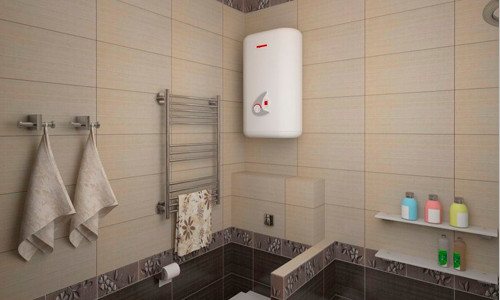

In apartments or houses where there is no hot water, it is impossible to imagine a comfortable life without installing a water heater.
Sellers / manufacturers do not recommend connecting the boiler with their own hands, but the installation process has a simple connection scheme that any craftsman can handle. Knowing the important aspects of installation will help you avoid annoying mistakes and correctly install equipment in the bathroom or kitchen. An electric water heater is installed in the domestic water supply network, which includes cold / hot water risers, pipeline connections and a mixer.
An apartment / house project rarely allows you to put one water heater for a bathroom and a kitchen at the same time due to their distance from each other. If possible, it is better to choose the location for the heating tank closer to the central riser, where the branch (input) of the water supply pipe to the apartment is located. This will ensure a satisfactory water flow to the boiler. Most often, the water heater is placed in the bathroom or in the toilet above the toilet. The boiler must be located in a well-accessible place for maintenance work.
Positive and negative qualities
By installing a water heater yourself, you can save a lot, this is the main advantage. But self-assembly also has other advantages.
Since the work is carried out by the owner of the house himself, then when servicing or needing to replace a faulty water heater, you will not need to understand the connection system.
In the future, replacing the heater will be completely simple. In addition, installation work will improve your skills in performing various household chores.
Of the shortcomings of self-installation of a water heater, it can be noted that there may be problems with connecting to both the water supply system and with energy or gas supply.
In addition, improper performance of the work can lead to the fact that the system will not work.
Before carrying out work on the installation of the water heater, several factors should be considered.
1. You need to immediately decide on the type of water heater.
An electric storage heater, also known as a "boiler", consumes less electricity, but it has rather large dimensions, so you should immediately determine whether there is a place for its installation.
A flow-through electric water heater is much more compact and it is easier to find a place for it. But it consumes more electricity.
2. When choosing a storage heater, you should immediately decide whether the wall on which it will be located will withstand a significant weight.
3. Immediately you need to inquire about the wiring of the house. If it is old, it is unlikely to withstand a heavy load. Therefore, it may be necessary to replace the electrical network at home.
The cross-section of the wire will help to calculate whether the wiring can hold the load.
So that the wiring can withstand the load created by the 2 kW boiler, a wire with a cross section of at least 2.5 mm is required. If a flow heater is installed, the wiring must be even thicker.
4. The water supply system should also be inquired. If, when laying it, separate conclusions were provided for connection, then this is very good.
If they are not there, but the system consists of plastic pipes, then it is not so difficult to insert the leads. The hardest part will be with metal pipes.
But if the water supply system is already outdated, then it is quite possible that it will have to be completely changed.It is also important to know how you can install an outlet in your bathroom.
Boiler installation
If there is a regular shutdown of hot water in the apartment, or there is none at all, then it is best to install a storage boiler. As in the case of the flow-through, it is advisable to plan in advance, because making installation for finishing will be quite problematic. Especially in the cramped bathroom area.
General installation requirements:
- first you need to decide on the volume of the tank and the installation location;
- the wall must be solid. For example, if the volume of the boiler is 80 liters, then its weight will be about 100 kg. Those. the plasterboard partition simply will not withstand it;
- a waterproof socket is provided for connection to an electrician. The cable cross-section must be at least 2.5 mm2, and for safety, you need to install an automatic machine;
- it is desirable that there are no more other consumers on the electrical cable, and it goes directly to the meter, or, as an option, to the junction box;
- the boiler must be grounded.
The most reliable way to mount the boiler is to install it on studs. For this, the wall is drilled through and wide substrates are placed on the outside. This will ensure that the fasteners will not fly out and the water heater will not collapse in the bathroom. This is especially true for flimsy walls. But, unfortunately, this mounting option is possible only if the apartment is being renovated.
vanna-prosto.ru
Required tools and materials
If the wiring of the house is quite capable of working with water heaters and it is possible to connect it to the water supply system or make a tie-in, then you can start work.
Of the tools you need:
- Perforator with a drill of the required thickness;
- Roulette;
- A set of keys;
- Screwdrivers;
- Pliers;
- Hammer, etc.
Additionally, you may need a soldering iron for plastic pipes or a die for threading metal pipes.
These tools are needed if you need a tie-in with a water supply system.
You will also need the following materials:
- Tow with a paste for sealing the joint or fum tape;
- Shut-off valves (quantity - from 1 to 3 pcs.);
- Tees (plastic or metal);
- Mounting hooks;
- Connecting hoses (if not included in the kit);
- Safety valve (for boiler);
- 3-core cable (it should be long enough to reach the meter);
- Circuit breaker or socket.
Next, we will consider the sequence of steps for installing and connecting different types of water heaters.
Important notes
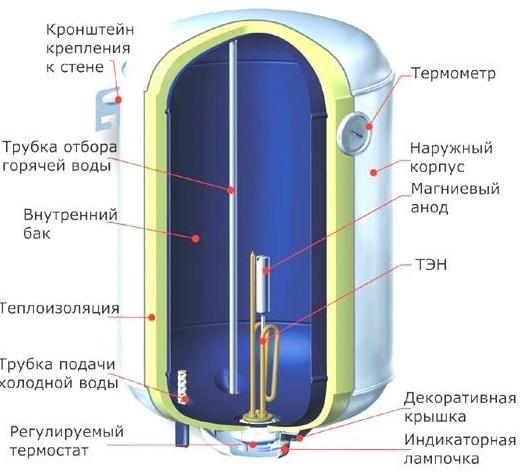

To prevent the boiler from getting dirty, you can install a fine filter in it, this will significantly extend the life of the water heater.
- Over a two-year period of operation, a large bucket of dirt can accumulate in the boiler tank. Due to poor water, the safety valve becomes clogged and ceases to function. This can be avoided by installing a high-quality fine filter (1 micron), which is installed immediately after the shut-off valve at the inlet of the pipeline to the apartment.
- When using a water heater in apartments with hot water supply, the hot water main pipe must be shut off, and the existing wiring is connected to the heating tank.
- Other points of water use must not be connected to the pipeline that goes from the riser to the boiler. Additional branching of the piping system reduces the water pressure.
- When supplying pipes to the heater, do not use a hose that often breaks through, but make the supply of pipes close to the inlet / outlet to the water heater.
To connect plastic / metal-plastic pipes with metal shut-off valves, plastic-to-metal adapters are soldered to the pipe.
Installation of instantaneous water heater
The first will be flow-through water heaters. These heaters are divided into portable and stationary.
With portable water heaters, there should be no installation problems at all. Often, water is supplied to them from a shower hose with a previously removed spray nozzle.
To install, just select its location. Then measure the attachment points. In this case, you need to take into account the length of the wiring, it should be enough to the nearest outlet.
Further, in the marked places, you need to drill holes in the wall with a puncher and screw the mounting hooks into them.
After that, hang the heater on the hooks, connect the shower hose to the inlet outlet and connect it to the socket.
This completes the installation. Below are examples of work.
The complexity of installing a stationary instantaneous water heater depends mainly on the water supply system of the house.
If only a pipeline with cold water enters the house, then installation will be easier, and if with cold and hot water, additional work will be required.
First, consider the first case.
The first step, again, will need to determine the location of the heater. But here you need to focus on the pipeline with water, the heater should be located not far from it.
Next, the device is fixed in the selected place. The installation process is identical to that described.
If the water pipe has an outlet with a shut-off valve for connection, then it will be easy to ensure the water supply.
It is enough to connect a flexible hose to the shut-off valve and to the supply outlet of the heater itself.
But you should also worry about the heater outlet. You also need to connect a flexible hose to it, and the other end to the mixer.
If there are several points of water intake, then it will be necessary to lay plastic pipelines to them, and then connect the hose from the heater to this pipeline.
If there is no separate conclusion in the security system, then you will have to make one.
If the pipes are plastic, then from the tools you will additionally need a soldering iron for plastic pipes, scissors for cutting them, and from materials - a tee and a stopcock.
Before starting work, you need to shut off the water supply to the system and drain its residues.
Then cut the pipe in the place closest to the location of the device.
Using a soldering iron, solder the tee into the cut, and connect the tap to it. Then connect the hoses to the device.
If the pipes are metal, then for the tie-in, you will need a die for threading the pipes.
The sequence of work is the same as for plastic ones: the pipe is cut, a thread is cut at its ends, a tee is screwed in, and a shut-off valve is screwed onto it.
After installation, check the tightness of all connections. To do this, the water supply is turned on and the connections are checked for leaks.
Next, the device is plugged into an outlet and the system is checked for functionality.
Second case.
If a hot water pipeline also enters the house, then in addition to connecting the supply to the heater from the cold water pipeline, it will be necessary to install two additional stopcocks and one tee.
The tee cuts into the hot water supply line. The first tap is installed in front of it, and the second is at the outlet of the heater.
This will ensure the connection and disconnection of hot water from different sources.
When using hot water from a centralized supply, the taps at the inlet and outlet to the heater are closed.
If water heated by the device is used, then the taps leading to it open, and the valve installed in front of the tee, embedded in the hot water pipeline, is closed.
Plumbing connection
The essence of connecting the storage device is that water comes from the system with cold water and, after heating, is supplied to the system with hot water.In this case, the intra-apartment wiring of the hot water supply must be shut off so that the heated water does not enter the common system through the riser.
Note! If the inter-apartment wiring is made of copper or plastic pipes, then it is advisable to use the same materials when connecting the heater.
The connection points can be threaded connections. These are connections of water meters with further internal wiring, mixer hoses with pipes. We will not consider the connection technology with cutting pipes, cutting threads, soldering copper, welding plastic.
Simple connection option
Consider connecting a boiler to the system with minimal structural and financial costs - through flexible hoses.
- Before starting work, we shut off the hot and cold water taps inside the apartment.
- We unscrew the flexible hoses of the washbasin mixer or disassemble the connections of the meters and the pipes following them.
- We install tees in these places.
- We attach ball valves to free outlets. They will completely block the branches to the boiler.
- We connect the boiler with these taps with flexible hoses (if the boiler is installed next to the washbasin).
- We open the shut-off valves and check all connections for leaks.
- We are waiting for a few minutes until the storage capacity is full. We close again the shut-off tap of the hot water supply. We connect the boiler to the mains.
- After heating, we open the water in the bathroom faucet, in the kitchen and check how the heater works.
vannayasvoimirukami.ru
Installation of a storage water heater
The installation of a storage water heater is approximately the same.
First, the location of the boiler is selected. It must be easily accessible for maintenance.
Then all measurements and holes are drilled to install the mounting hooks.
Additionally, it may be necessary to install safety bolts.
Another way.
Then the water supply is connected. If only a pipeline with cold water enters the house, then a tee is cut into it, and a shut-off valve is already on it.
A safety valve must be located at the inlet outlet to the boiler, which ensures the maintenance of the required pressure in the boiler.
Since this valve has a water outlet, it will be necessary to connect a silicone tube to it, the end of which is brought out to the drain.
A hose is connected to the boiler outlet, through which hot water will be supplied to the pipeline leading to the consumers.
Therefore, it is advisable to lay this pipeline in advance.
After that, the heater is connected to the electrical network. It is best to connect to the junction box closest to the meter. Now for these purposes, you can use smart sockets, but you need to know the models that can withstand a heavy load.
It is advisable to lay the wire in a groove with its subsequent termination. Not far from the boiler, a circuit breaker must be installed in the wiring.
Schematic diagram of the boiler installation.
If a pipeline with hot water also enters the house, then it will be necessary to insert the outlet pipe from the boiler into this pipeline and install another tee and two additional taps.
After that, you will need to pump the heater with water. To do this, you need to open one of the taps of the consumption point, and after that, the tap for supplying water to the heater.
If there is a connection to the centralized hot water pipeline, the tap installed in front of the tee must be closed and the tap at the outlet from the boiler must be opened.
Water, filling the system, will push out the air in the system and it will come out through the tap of the consumption point.
During pumping, all pipeline connections should be inspected for leaks.
If necessary, the connections can be tightened.If the leak persists after tightening, it is better to repack the connection, having previously shut off all the supply taps and drained the water from the system.
Boiler installation examples.
After filling the systems with water, the boiler is connected to the network.
elektrikexpert.ru
Installation
Before installation, you must carefully study the instructions in order to know how to properly connect the heater to the water supply network.
Having determined the location of the boiler, it is necessary to mark the points for the anchor bolts. The height of the attachment line is determined by fitting the boiler. A horizontal line is drawn with a marker or pencil. The distance between the fixing points is measured between the holes in the bracket on the back of the boiler.
If the wall is tiled, then the holes are first drilled with a drill in concrete without using the impact drilling mode, and the drilling site is moistened with water. Then holes are drilled in the main wall where the bolts are inserted. Having fixed the anchor, they hang the drive on them.
Note! The diameter of the drill must be larger than the diameters of the anchor bolt and the drill, as this liner will split when drilling through the wall through the tiles.
Before connecting to the water supply, you need to study the diagram again. In a new apartment, when planning an intra-apartment water supply network, outlets for connecting a boiler can be immediately provided, to which it is connected using flexible hoses.
Installation of a flow-through water heating system
Installation and assembly of such a structure can be done in two different ways. In the first case, the hot water outlet from the appliance is connected directly to the mixer using a shower hose with the nozzle removed. With this installation, the hot and cold water supply will be adjusted using the mixer control lever.
For country houses, the capital installation of the device is appropriate
Of course, it is advisable, if possible, to connect your plumbing equipment in a more serious way than using an unreliable rubber shower hose. For this, it is necessary to carry out a major assembly of the product to the pipeline. Install a shut-off valve on the water supply to the heater.
It is worthwhile to supply the device with electricity, fulfilling the safety requirements for connecting electric heating equipment. It should be remembered that the energy content of the heating elements may exceed the permissible load in the electrical network of your apartment. In the best case, this will lead to knocking out plugs or automatic fuses, but it is possible that the wiring will catch fire.
Wall markings for drilling holes for mounting an instantaneous water heater
Next, the device must be mounted on the wall. The heater is fixed with dowels driven into the holes prepared in advance. After that, the product can be connected to the water supply.
The next step is to install a faucet or shower mixer that is included with the product. Now you can make a test run of the equipment. To do this, you need to open the tap and turn on the electrical equipment in the network. After a short period of time, 10-15 seconds, heated water will flow from the mixer drain hole.
In the event that the tap water does not meet quality standards, it is advisable to install a filter in front of the water heater inlet. This will extend the life of the product. Use branded pipes and plumbing fittings.

